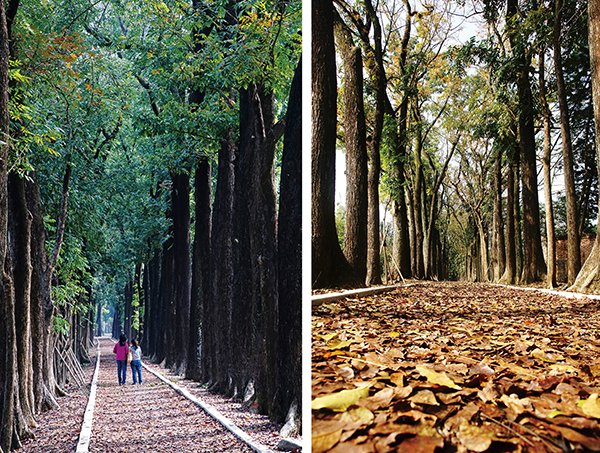※Sinwei Forest Park Sinwei Forest Park is located on the west bank of the Laonong River in Liouguei. Due to the area's fertile soil, it was previously used as an orchard. Today, lush mahogany trees line two kilometers of road, creating a shady and romantic throughway. Within the park there are over 200 species of trees. Visitors can also climb up to an observation deck and enjoy the park's beautiful scenery, with the river in the background. There is also a coffee shop where visitors can relax and enjoy the mountainside ambiance. Since its recent reopening as a public nature park, its natural beauty has been featured on Instagram and Facebook. April to May is the most beautiful time of year to enjoy the majestic mahogany forest.
 ※Bulao Hot Spring Established in 1967, Bulao Hot Spring was Liouguei District's earliest hot spring resort. Surrounded by lush green hills, it boasts panoramic views of the mountains and Laonong River. The spring water is crystal clear and due to its low alkaline carbonic acid, it does not emit a Sulfuric odor. It is said to have numerous health benefits and rejuvenating effects (in Mandarin Bulao literally means not old). It is said to improve skin conditions, make the skin smoother, alleviate fatigue and muscle pain, along with numerous other health benefits. Many visitors venture from the busy city to relax in its rejuvenating waters.  ※Sinliao Ancient Well and hiking trail Liouguei is abundant in water resources. The area also boasts diverse flower and fauna and a scenic mountainous terrain. Throughout the region one can see a unique ecology with numerous species of wildlife and birds. The area is also famous for a variety of butterflies. Since ancient times it has been inhabited by various aboriginal groups including the Pingpu people. The Hakka also have historically lived on the mountainside and often competed with the early Taiwanese settlers to access water resources from the Laonong River. The Hakka people later discovered that Sinliao had a natural well. This became their main water source, which is still used today by the local Hakka community. The well is located at the entrance of an ancient hiking trail and has been attracting an increasing number of visitors. Due to the area's abundant water resources and the functionality of the well, villages have been developing around it. Visitors can witness how residents use the well water to brew the local tea. | 

沒有留言:
張貼留言